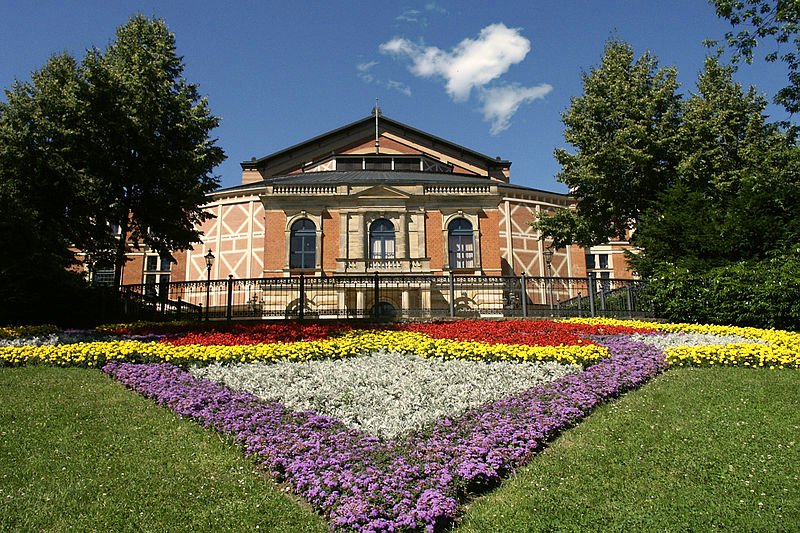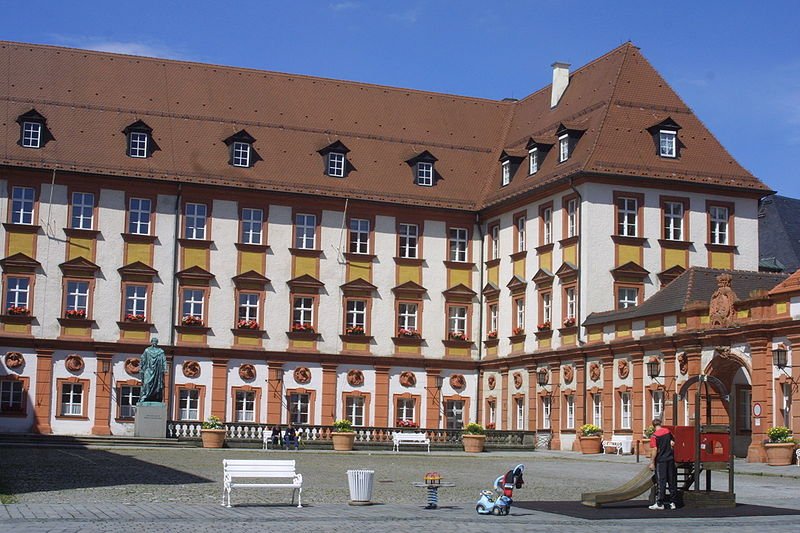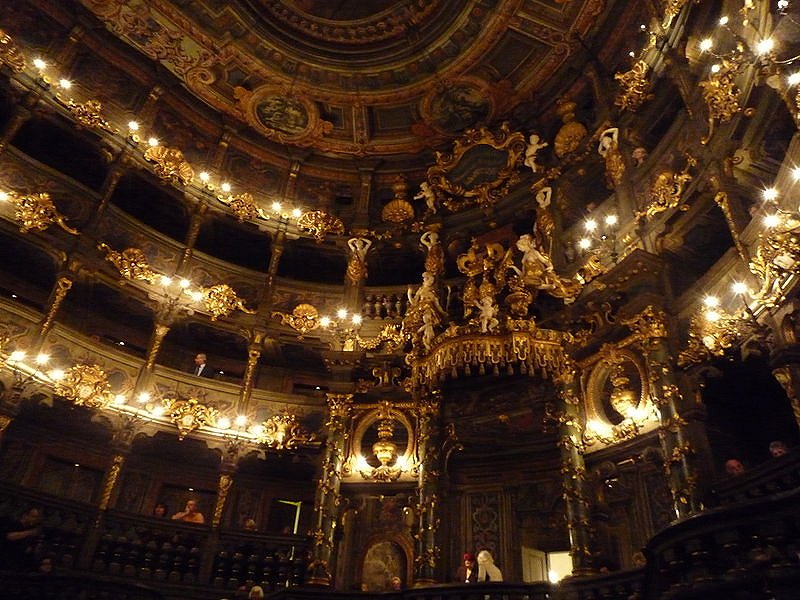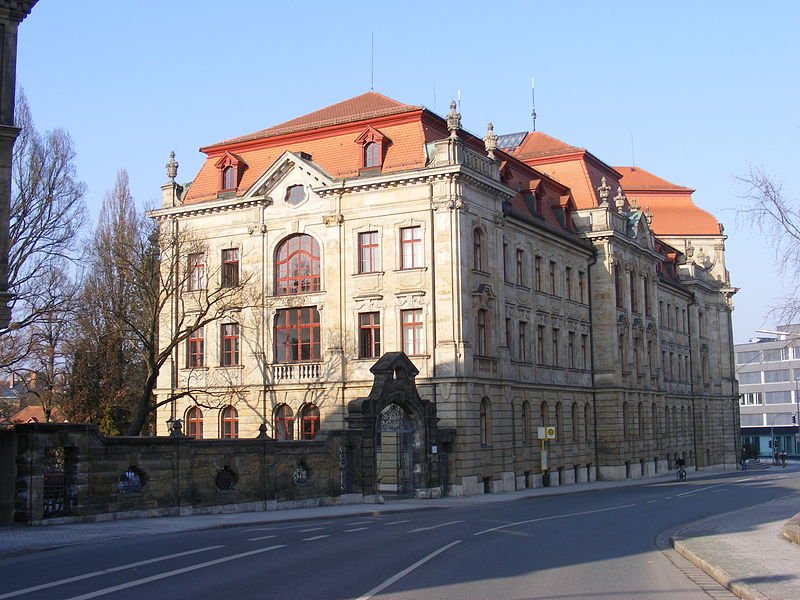 Festspielhaus, Bayreuth
Festspielhaus, BayreuthSource: https://commons.wikimedia.org/wiki/File:Bayreuth_Festspielhaus_2006-07-16.jpg
Author: Rico Neitzel

Bayreuth is a moderate-size city in Bavaria, Germany. It covers 66.92 sq km (25.84 sq mi) and has a population of 72,000 (2033 estimate). The town is in the Central European Time Zone (UTC+1/+2). It is located on the banks of the Red Main River, one of the two main branches of the Main. The city is famous for its connection with 19th German composer Richard Wagner, and an annual festival called Bayreuth Festival (or Richard Wagner Festival or Festspiele) is held in which his operas are staged.
Bayreuth is believed to have been founded in the mid-12th century by the Counts of Andechs. Formerly a collection of villages, it was first termed a town in 1231. The town converted to the Lutheran faith in 1528, ten years after the Protestant Reformation got underway. Freedom for the Roman Catholics and Jews to worship was eventually relaxed in the 18th century. A synagogue opened in Bayreuth in 1760 and a Jewish cemetery in 1787.
 Altes Schloss, Bayreuth
Altes Schloss, BayreuthSource: https://commons.wikimedia.org/wiki/File:Bayreuth_Schloss.jpg
Author: Immanuel Giel

Bayreuth was under the rule of the House of Hohenzollern from 1260, when their base was the Castle of Plassenburg in Kulmbach. It was relocated to Bayreuth in 1603 under Margrave Christian. The rule of the Hohenzollerns over the Principality of Kulmbach-Bayreuth finally came to an end in 1806, when Prussia was defeated by Napoleonic France.
Between 1806 and 1810, Bayreuth became a province of the French Empire. Then in 1810 it was purchased by Kingdom of Bavaria from France for 15 million francs. Under Bavarian rule, Bayreuth experience infrastructure improvements, including the construction of railway lines that link it to other major towns.
Richard Wagner went to Bayreuth in 1870 to visit the Margrave Opera House. When the venue seem insufficient to accommodate the large number of musicians required for his piece, The Artwork of the Future (Das Kunstwerk der Zukunft), the town supported his idea to built his own festival hall in Bayreuth. This led to the construction of the Festival Hall, which was completed in 1872, and is the venue of the Bayreuth Festival.
 Interior of the Margrave's Opera House in Bayreuth
Interior of the Margrave's Opera House in BayreuthSource: https://commons.wikimedia.org/wiki/File:Op%C3%A9ra_des_margraves_int%C3%A9rieur_Bayreuth.JPG
Author: Dbopp

Bayreuth was one of the Nazi strongholds leading up to the Second World War. Nazi leaders often attended the Bayreuth Festival, and they attempted to make the city a Nazi model town. At the same time, the Jews of the city suffered under Nazi hands. Their synagogue was desecrated and eventually over a hundred Jews from Bayreuth were killed by the Nazis.
Bayreuth was part of the American Zone after the war. The town population has swollen due to an influx of refugees from the surrounding areas, creating a housing problem. However life was slowly getting back to normal, with the Bayreuth Festival being staged again in 1947 and the Festival Hall opened for performances from 1949.
 Justizpalast Bayreuth
Justizpalast BayreuthSource: https://commons.wikimedia.org/wiki/File:Bayreuth_-_Justizpalast_Bayreuth_%28Au%C3%9Fenansicht%29.jpg
Author: Mattes

Today Bayreuth is a modern city in Germany with a well-preserved cultural tradition associated with Richard Wagner that it continues to celebrate.
Visiting Bayreuth, Germany
You can reach Bayreuth by flight from Nuremburg. From there, you can take a train to Bayreuth. The Regional-Express train takes about 66 minutes to make the journey while the Interregio-Express takes about 49 minutes to reach Bayreuth.Places of Interest in Bayreuth, Germany
- Eremitage
- Festspielhaus
- Franz-Liszt-Museum
- Markgräfliches Opernhaus
- Neues Schloss
- Villa Wahnfried
 Latest updates on Penang Travel Tips
Latest updates on Penang Travel Tips

Copyright © 2003-2025 Timothy Tye. All Rights Reserved.

 Go Back
Go Back